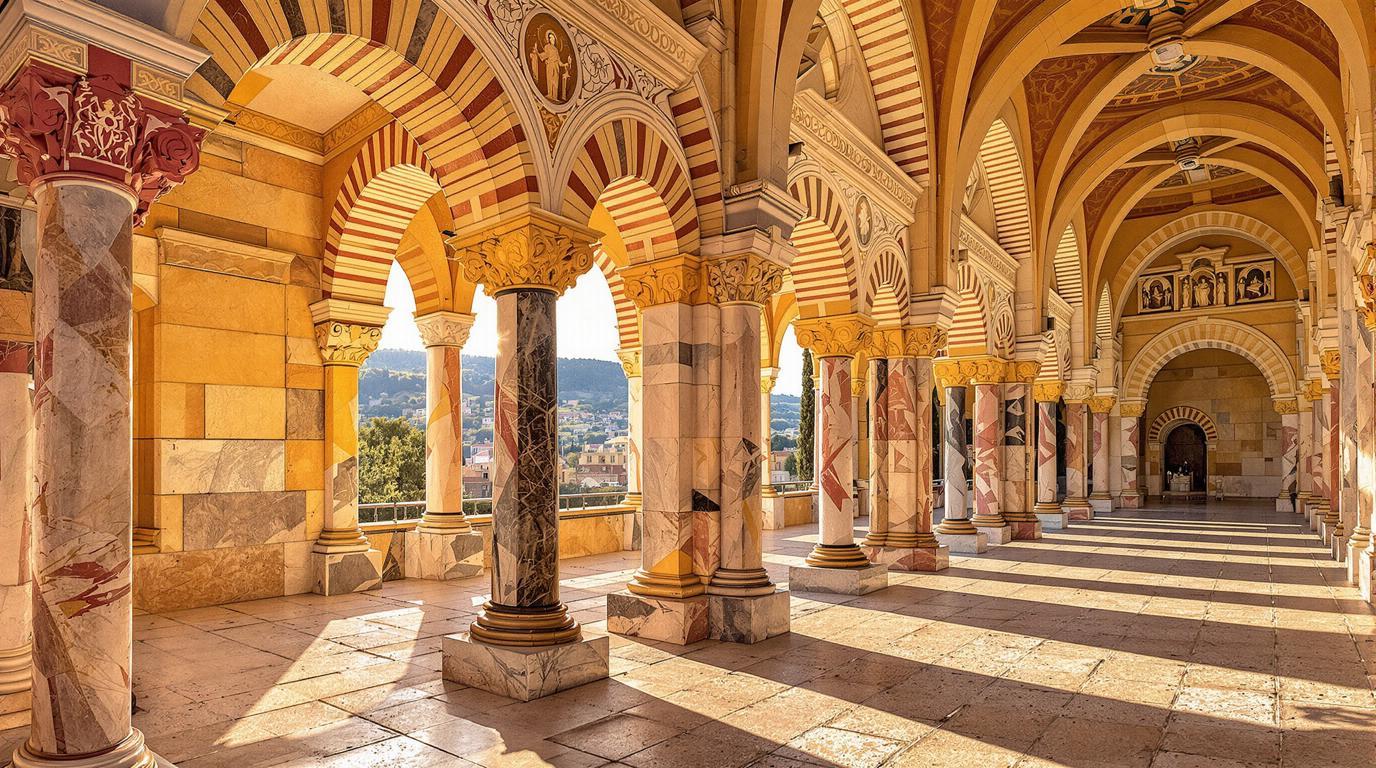Tucked between the Mediterranean’s azuré waters and the majestic Pyrenees Mountains lies a medieval treasure that few travelers ever discover. Saint-Génis-des-Fontaines represents the France that exists beyond the tourist trail—a place where history whispers from ancient stone walls and where time seems to move at the gentle pace of the local vintners tending their sun-drenched vines.
A thousand-year legacy carved in stone
The village’s crown jewel is unquestionably its Benedictine Abbey, founded around 780 AD. What makes this historical monument extraordinary is its remarkable carved lintel dated 1019/1020—recognized as the earliest dated Romanesque stone sculpture in existence. Standing before this millennia-old masterpiece offers a direct connection to the artisans who shaped it with primitive tools and boundless devotion.
“When morning light filters through the cloister’s arcade, it creates a dance of shadows across marble columns that hasn’t changed in 800 years,” explains Marie Dubois, local historian. “It’s like stepping into a living history book.”
The cloister itself deserves special attention, with its rare polychrome marble columns crafted from regional stones—white from Céret, pink from Villefranche-de-Conflent, and black from Corbières Roussillonnaises—creating a visual symphony that captivates architecture enthusiasts and casual visitors alike.
Between mountains and sea: nature’s perfect balance
Saint-Génis-des-Fontaines sits at the nexus of diverse landscapes, making it an ideal base for exploration. The surrounding Albères mountains offer trails for hikers of all levels, while the Mediterranean coast lies just minutes away. This geographical blessing means you can hike through fragrant pine forests in the morning and swim in crystal waters by afternoon—a combination rare even in travel-rich Europe.
For a truly magical experience, take the trail to Pic de Fontfrède at sunrise, where panoramic views stretch from snow-capped Canigou to the sparkling Mediterranean. The play of light across this diverse terrain creates photographic opportunities that rival those of Normandy’s famous cliffs where Monet once struggled with ever-changing light.
Wine traditions: tasting the terroir
The village sits amid the renowned Roussillon wine region, where vintners have perfected their craft over centuries. The local cooperative, Les Vignerons des Alberes, produces the distinctive Rivesaltes Grenat—a wine with pronounced red fruit notes that seems to capture the essence of the Mediterranean sunshine in each glass.
“Our wines tell the story of this land—the minerality from mountain soils, the warmth of our sun, the kiss of sea breezes,” shares Jean-Pierre Valette, a fifth-generation winemaker. “Each bottle is a landscape you can taste.”
Spiritual retreats beyond the village
History buffs and spiritual seekers will appreciate the nearby Chapelle Sainte Colombe de Cabanes, a pre-Romanesque former priory enveloped by greenery. This hidden sanctuary offers a meditative atmosphere reminiscent of medieval villages founded by knights-turned-monks—places where silence speaks volumes and ancient stones tell tales of devotion.
Coastal wonders within reach
Just a short drive away, the Vermeille Coast presents scenery that rivals far more famous destinations. Paulilles Bay, with its abandoned brick factory ruins against a backdrop of crystalline waters, creates a juxtaposition of human history and natural beauty. These waters shimmer with a blue that would make visitors to England’s Caribbean-like coastal islands do a double-take.
Where to stay: historical immersion
For an unforgettable experience, several restored medieval homes now function as guesthouses, offering authentic accommodations with modern comforts. While not quite as dramatic as lighthouses offering dolphin shows from bedroom windows, these charming stays provide their own form of magic—the chance to sleep within walls that have witnessed centuries of history unfold.
Saint-Génis-des-Fontaines exemplifies France’s enduring ability to surprise even seasoned travelers. In this village, where ancient stone pathways lead to vineyards that have flourished for generations, you’ll discover that the most meaningful journeys often happen in the quietest places—where history, nature, and culture converge in a tapestry as rich and complex as the local wines that flow from its sun-blessed soil.
